ISO 22000 :
What is ISO 22000?
ISO 22000 is a Food Safety Management System that can be applied to any organization in the food chain, farm to fork. Becoming certified to ISO 22000 allows a company to show their customers that they have a food safety management system in place. This provides customer confidence in the product. This is becoming more and more important as customers demand safe food and food processors require that ingredients obtained from their suppliers to be safe.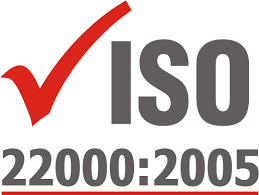
The International Organization for Standardization (ISO) developed the Food Safety Management System Certification: ISO 22000. ISO and its member countries used the Quality Management System approach, and tailored it to apply to Food Safety, incorporating the widely used and proven HACCP principles and Good Manufacturing Principles.
The standard has requirements for Food Safety Management Systems processes and procedures & requires that the organization implement prerequisite programs and HACCP.
Unlike some of the other Food Safety Management Systems Certification programs (for example FSSC 22000 and SQF) the ISO 22000 does not have specific requirements for prerequisite programs (PRPs), but requires that the organization identifies and implements the appropriate programs. This makes it more flexible, and food organizations of any type can implement and be certified to ISO 22000.
WHO SHOULD USE ISO 22000?
Since ISO 22000 is a generic food safety management standard, it can be used by any organization directly or indirectly involved in the food chain. It applies to all organizations in the food chain. It doesn’t matter how complex the organization is or what size it is, ISO 22000 can help ensure the safety of its food products.
The food chain consists of the entire sequence of stages and operations involved in the creation and consumption of food products. This includes every step from initial production to final consumption. More precisely, it includes the production, processing, distribution, storage, and handling of all food and food ingredients.
The food chain also includes organizations that do not directly handle food. These include organizations that produce feed for animals that produce food and for animals that will be used as
food. It also includes organizations that produce materials that will eventually come into contact with food or food ingredients.
ISO 22000 can be used by:
- Primary producers
- Farms
- Ranches
- Fisheries
- Dairies
- Processors
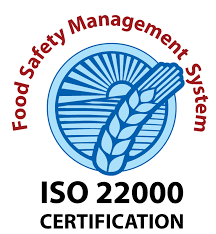
- Fish processors
- Meat processors
- Poultry processors
- Feed processors
- Manufacturers
- Soup manufacturers
- Snack manufacturers
- Bread manufacturers
- Cereal manufacturers
- Dressing manufacturers
- Beverage manufacturers
- Seasoning manufacturers
- Packaging manufacturers
- Frozen food manufacturers
- Canned food manufacturers
- Confectionery manufacturers
- Dietary supplement manufacturers
- Food service providers
- Grocery stores
- Restaurants
- Cafeterias
- Hospitals
- Hotels
- Resorts
- Airlines
- Cruise ships
- Seniors lodges
- Nursing homes
- Other service providers
- Storage service providers
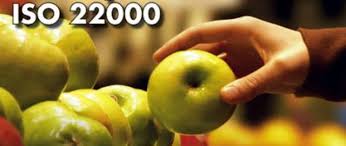
- Catering service providers
- Logistics service providers
- Transportation service providers
- Distribution service providers
- Sanitation service providers
- Cleaning service providers
- Storage service providers
- Product suppliers
- Suppliers of tools
- Suppliers of utensils
- Suppliers of equipment
- Suppliers of additives
- Suppliers of ingredients
- Suppliers of raw materials
- Suppliers of cleaning agents
- Suppliers of sanitizing agents
- Suppliers of packaging materials
- Suppliers of other food contact materials
ISO 22000 OBJECTIVES:
ISO 22000 will help you to achieve the following objectives:
- To establish a food safety management system (FSMS).
- To plan and implement a FSMS for your organization.
- To operate and maintain your organization’s FSMS.
- To update and improve your organization’s FSMS.
- To ensure that products do not cause adverse health effects.
- To demonstrate compliance with external safety requirements.
- To demonstrate compliance with legal safety requirements.
- To demonstrate compliance with regulatory requirements.
- To demonstrate compliance with statutory requirements.
- To demonstrate compliance with customer requirements.
- To demonstrate compliance with legal safety requirements.
- To evaluate your customers’ food safety requirements.
- To provide safe products and enhance customer satisfaction.
- To export food products and penetrate international markets.
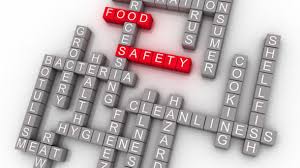
- To communicate safety issues throughout the food chain.
- To communicate with your organization’s customers.
- To communicate with your organization’s suppliers.
- To communicate with other relevant interested parties.
- To ensure that you comply with your food safety policy.
- To demonstrate compliance to all interested parties.
ISO 22000 AND HACCP
ISO 22000 uses HACCP. HACCP stands for Hazard Analysis and CriticalControl Point. It was developed by the Codex Alimentarius Commission.HACCP is a methodology and a management system. It is used to identify, prevent, and control food safety hazards. HACCP management systems apply the following methodology:
- Conduct a food safety hazard analysis.
- Identify your critical control points (CCPs).
- Establish critical limits for each critical control point.
- Develop procedures to monitor critical control points.
- Design corrective actions to handle critical limit violations.
- Create a food safety record keeping system.
- Validate and verify your system.
ISO 22000 standard include clauses as follows:
1. Documents control
The controls shall ensure that all proposed changes are reviewed prior to implementation to determine their effects on food safety and their impact on the food safety management system.
A documented procedure shall be established to define the controls needed to: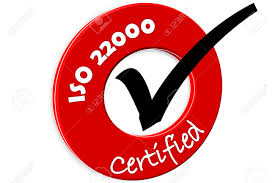
1. Approve documents for adequacy prior to issue,
2. Review and update documents as necessary, and re-approve documents,
3. Ensure that changes and the current revision status of documents are identified,
4. Ensure that relevant versions of applicable documents are available at points of use,
5. Ensure that documents remain legible and readily identifiable,
6. Ensure that relevant documents of external origin are identified and their distribution controlled, &
7. Prevent the unintended use of obsolete documents, and to ensure that they are suitably identified as such if they are retained for any purpose.
2.Records control
Records shall be established and maintained to provide evidence of conformity to requirements and evidence of the effective operation of the food safety management system.
Records shall remain legible, readily identifiable and retrievable.
A documented procedure shall be established to define the controls needed for the identification, storage, protection, retrieval, retention time and disposition of records.
3. Management commitment
Top management shall provide evidence of its commitment to the development and implementation of the food safety management system and to continually improving its effectiveness by:
1. Showing food safety is supported by the business objectives of the organization,
2. Communicating to the organization the importance of meeting the requirements of this standard, any statutory and regulatory requirements, as well as customer requirements relating to food safety,
3. Establishing the food safety policy,
4. Conducting management reviews, and
5. Ensuring the availability of resources.
4. Food safety policy
Food safety policy of ISO 22000
Top management shall define, document and communicate its food safety policy.
1. Is appropriate to the role of the organization in the food chain,
2. Conforms with both statutory and regulatory requirements and with mutually agreed food safety requirements of customers,
3. Is communicated, implemented and maintained at all levels of the organization,
4. Is reviewed for continued suitability,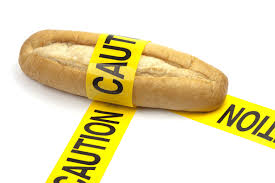
5. Adequately addresses communication, and
6. Is supported by measurable objectives.
5. Food safety team leader
Food safety team leader
Top management shall appoint a food safety team leader who, irrespective of other responsibilities, shall have the responsibility and authority:
1. Manage a food safety team and organize its work,
2. Ensure relevant training and education of the food safety team members
3. Ensure that the food safety management system is established, implemented, maintained and updated, and
4. Report to the organization’s top management on the effectiveness and suitability of the food safety management system.
6. External communication
Clause 5.6.1
To ensure that sufficient information on issues concerning food safety is available throughout the food chain, the organization shall establish, implement and maintain effective arrangements for communicating with
a) suppliers and contractors,
b) customers or consumers, in particular in relation to product information (including instructions regarding intended use, specific storage requirements and, as appropriate, shelf life), enquirers, contracts or order- handling including amendments, and customer feedback including customer complaints,
c) statutory and regulatory authorities, and
d) other organizations that have an impact on, or will be affected by, the effectiveness or updating of the food safety management system.
Such communication shall provide information on food safety aspects of the organization’s products that may be relevant to other organizations in the food chain. This applies especially to known food safety hazards that need to be controlled by other organizations in the food chain. Records of communications shall be maintained.
Food safety requirements from statutory and regulatory authorities and customers shall be available.
Designated personnel shall have defined responsibility and authority to communicate externally any information concerning food safety. Information obtained through external communication shall be included as input to system updating (see 8.5.2) and management review (see 5.8.2).
7. Internal communication
Clause 5.6.2
The organization shall establish, implement and maintain effective arrangements for communicating with personnel on issues having an impact on food safety.
In order to maintain the effectiveness of the food safety management system, the organization shall ensure that the food safety team is informed in a timely manner of changes, including but not limited to the following:
a) products or new products;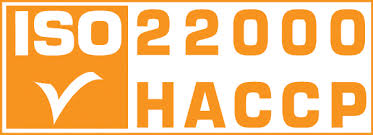
b) raw materials, ingredients and services;
c) production systems and equipment;
d) production premises, location of equipment, surrounding environment;
e) cleaning and sanitation programs;
f) packaging, storage and distribution systems;
g) personnel qualification levels and/or allocation of responsibilities and authorizations;
h) statutory and regulatory requirements;
i) knowledge regarding food safety hazards and control measures;
j) customer, sector and other requirements that the organization observes;
k) relevant enquiries from external interested parties;
l) complaints indicating food safety hazards associated with the product;
m) other conditions that have an impact on food safety.
The food safety team shall ensure that this information is included in the updating of the food safety
management system (see 8.5.2). Top management shall ensure that relevant information is included as input to the management review (see 5.8.2).
8. Management review
Management review in ISO 22000
Clause 5.8
1. General of Management review
Top management shall review the organization’s food safety management system at planned intervals to ensure its continuing suitability, adequacy and effectiveness. This review shall include assessing opportunities for improvement and the need for change to the food safety management system, including the food safety policy.
Records of management reviews shall be maintained (see 4.2.3).
2. Review input
The input to management review shall include, but is not limited to, information on
a) follow-up actions from previous management reviews,
b) analysis of results of verification activities (see 8.4.3),
c) changing circumstances that can affect food safety (see 5.6.2),
d) emergency situations, accidents (see 5.7) and withdrawals (see 7.10.4),
e) reviewing results of system-updating activities (see 8.5.2),
f) review of communication activities, including customer feed-back (see 5.6.1), and
g) external audits or inspections.
NOTE The term “withdrawal” includes recall.
The data shall be presented in a manner that enables top management to relate the information to stated objectives of the food safety management system.
3. Review output
The output from the management review shall include decisions and actions related to
a) assurance of food safety (see 4.1),
b) improvement of the effectiveness of the food safety management system (see 8.5),
c) resource needs (see 6.1), and
d) revisions of the organization’s food safety policy and related objectives (see 5.2).
9. Resource management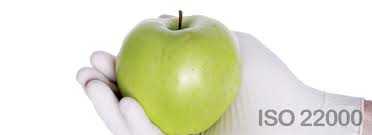
Resource management in ISO 22000
Clause 6.0
1. Provision of resources
The organization shall provide adequate resources for the establishment, implementation, maintenance and updating of the food safety management system.
The food safety team and the other personnel carrying out activities having an impact on food safety shall be competent and shall have appropriate education, training, skills and experience.
Where the assistance of external experts is required for the development, implementation, operation or assessment of the food safety management system, records of agreement or contracts defining the responsibility and authority of external experts shall be available.
2. Competence, awareness and training
The organization shall
a) identify the necessary competencies for personnel whose activities have an impact on food safety,
b) provide training or take other action to ensure personnel have the necessary competencies,
c) ensure that personnel responsible for monitoring, corrections and corrective actions of the food safety management system are trained,
d) evaluate the implementation and the effectiveness of a), b) and c),
e) ensure that the personnel are aware of the relevance and importance of their individual activities in contributing to food safety,
f) ensure that the requirement for effective communication (see 5.6) is understood by all personnel whose activities have an impact on food safety, and
g) maintain appropriate records of training and actions described in b) and c).
3. Infrastructure
The organization shall provide the resources for the establishment & maintenance of the infrastructure needed to implement the requirements of this International Standard.
4. Work environment
The organization shall provide the resources for the establishment, management and maintenance of the work environment needed to implement the requirements of this International Standard.
10. Prerequisite programs
Prerequisite programs (PRPs) in ISO 22000
Clause 7.2
1. The organization shall establish, implement and maintain PRP(s) to assist in controlling
a) the likelihood of introducing food safety hazards to the product through the work environment,
b) biological, chemical and physical contamination of the product(s), including cross contamination between products, and
c) food safety hazard levels in the product and product processing environment.
2. The PRP(s) shall
a) be appropriate to the organizational needs with regard to food safety,
b) be appropriate to the size and type of the operation and the nature of the products being manufactured and/or handled,
c) be implemented across the entire production system, either as programs applicable in general or as programs applicable to a particular product or operational line, and
d) be approved by the food safety team.
The organization shall identify statutory and regulatory requirements related to the above.
3. When selecting and/or establishing PRP(s), the organization shall consider and utilize appropriate
information [e.g. statutory & regulatory requirements,customer requirements,recognized guidelines, Codex Alimentarius Commission (Codex) principles and codes of practices, national, international or sector standards.
NOTE : Annex C gives a list of relevant Codex publications.
The organization shall consider the following when establishing these programs:
a) construction and lay-out of buildings and associated utilities;
b) lay-out of premises, including workspace and employee facilities;
c) supplies of air, water, energy and other utilities;
d) supporting services, including waste and sewage disposal;
e) the suitability of equipment and its accessibility for cleaning, maintenance and preventative maintenance;
f) management of purchased materials (e.g. raw materials, ingredients, chemicals and packaging), supplies (e.g. water, air, steam and ice), disposals (e.g. waste and sewage) and handling of products (e.g. storage and transportation);
g) measures for the prevention of cross contamination;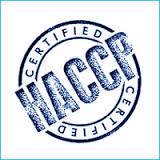
h) cleaning and sanitizing;
i) pest control;
j) personnel hygiene;
k) other aspects as appropriate.
Verification of PRP(s) shall be planned (see 7.8) and PRP(s) shall be modified as necessary (see 7.7). Records of verifications and modifications shall be maintained.
11. Food safety team
Food safety team in ISO 22000
Clause 7.3.2
A food safety team shall be appointed.
The food safety team shall have a combination of multi-disciplinary knowledge and experience in developing and implementing the food safety management system. This includes, but need not be limited to, the organization’s products, processes, equipment and food safety hazards within the scope of the food safety management system.
Records shall be maintained that demonstrate that the food safety team has the required knowledge and experience (see 6.2.2).
12. Product characteristics
Product characteristics in ISO 22000
Clause 7.3.3
1. Raw materials, ingredients and product-contact materials.
All raw materials, ingredients and product-contact materials shall be described in documents to the extent needed to conduct the hazard analysis (see 7.4), including the following, as appropriate:
a) biological, chemical and physical characteristics;
b) composition of formulated ingredients, including additives and processing aids;
c) origin;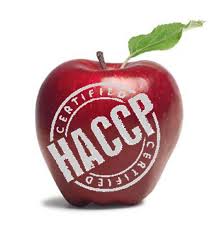
d) method of production;
e) packaging and delivery methods;
f) storage conditions and shelf life;
g) preparation and/or handling before use or processing;
h) food safety-related acceptance criteria or specifications of purchased materials and ingredients appropriate to their intended uses.
The organization shall identify statutory and regulatory food safety requirements related to the above. The descriptions shall be kept up-to-date including, when required, in accordance with 7.7.
2. Characteristics of end products
The characteristics of end products shall be described in documents to the extent needed to conduct the hazard analysis (see 7.4), including information on the following, as appropriate:
a) product name or similar identification;
b) composition;
c) biological, chemical and physical characteristics relevant for food safety;
d) intended shelf life and storage conditions;
e) packaging;
f) labelling relating to food safety and/or instructions for handling, preparation and usage;
g) method(s) of distribution.
The organization shall identify statutory and regulatory food safety requirements related to the above. The descriptions shall be kept up-to-date including, when required, in accordance with 7.7.
13. Intended use
Clause 7.3.4
The intended use, the reasonably expected handling of the end product, and any unintended but reasonably expected mishandling and misuse of the end product shall be considered and shall be described in documents to the extent needed to conduct the extent needed to conduct the hazard analysis (see 7.4).
Groups of users and, where appropriate, groups of consumers shall be identified for each product, and consumer groups known to be especially vulnerable to specific food safety hazards shall be considered.The descriptions shall be kept up-to-date including, when required, in accordance with 7.7.
14. Flow diagrams, process steps and control measures
Flow diagrams, process steps and control measures in ISO 22000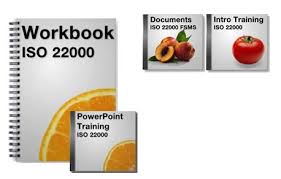
Clause 7.3.5
1. Flow diagrams
Flow diagrams shall be prepared for the products or process categories covered by the food safety management system. Flow diagrams shall provide a basis for evaluating the possible occurrence, increase or introduction of food safety hazards. Flow diagrams shall be clear, accurate and sufficiently detailed. Flow diagrams shall, as appropriate, include the following:
a) the sequence and interaction of all steps in the operation;
b) any outsourced processes and subcontracted work;
c) where raw materials, ingredients and intermediate products enter the flow;
d) where reworking and recycling take place;
e) where end products, intermediate products, by-products and waste are released or removed.
In accordance with 7.8, the food safety team shall verify the accuracy of the flow diagrams by on-site checking. Verified flow diagrams shall be maintained as records.
2. Description of process steps and control measures
The existing control measures, process parameters and/or the rigorousness with which they are applied, or procedures that may influence food safety, shall be described to the extent needed to conduct the hazard analysis (see 7.4).
External requirements (e.g. from regulatory authorities or customers) that may impact the choice and the rigorousness of the control measures shall also be described. The descriptions shall be updated in accordance with 7.7.
15. Hazard analysis
Hazard analysis in ISO 22000
Clause 7.4
1. General of Hazard analysis
The food safety team shall conduct a hazard analysis to determine which hazards need to be controlled, the degree of control required to ensure food safety, and which combination of control measures is required.
2 Hazard identification and determination of acceptable levels
2.1 All food safety hazards that are reasonably expected to occur in relation to the type of product, type of process and actual processing facilities shall be identified and recorded.
The identification shall be based on
a) the preliminary information and data collected according to 7.3,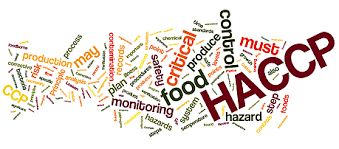
b) experience,
c) external information including,to the extent possible, epidemiological and other historical data, and
d) information from the food chain on food safety hazards that may be of relevance for the safety of the end products, intermediate products and the food at consumption.
The step(s) (from raw materials, processing and distribution) at which each food safety hazard may be introduced shall be indicated.
2.2 When identifying the hazards, consideration shall be given to
a) the steps preceding and following the specified operation,
b) the process equipment, utilities/services and surroundings, and
c) the preceding and following links in the food chain.
2.3 For each of the food safety hazards identified,the acceptable level of the food safety hazard in the end product shall be determined whenever possible. The determined level shall take into account established statutory and regulatory requirements, customer food safety requirements, the intended use by the customer and other relevant data. The justification for, and the result of, the determination shall be recorded.
3. Hazard assessment
A hazard assessment shall be conducted to determine, for each food safety hazard identified (see 7.4.2), whether its elimination or reduction to acceptable levels is essential to the production of a safe food, and whether its control is needed to enable the defined acceptable levels to be met. Each food safety hazard shall be evaluated according to the possible severity of adverse health effects and the likelihood of their occurrence. The methodology used shall be described, and the results of the food safety hazard assessment shall be recorded.
4. Selection and assessment of control measures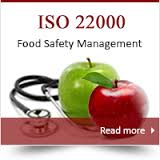
Based on the hazard assessment of 7.4.3, an appropriate combination of control measures shall be selected which is capable of preventing, eliminating or reducing these food safety hazards to defined acceptable levels. In this selection, each of the control measures as described in 7.3.5.2 shall be reviewed with respect to its effectiveness against the identified food safety hazards. The control measures selected shall be categorized as to whether they need to be managed through operational PRP(s) or by the HACCP plan.
The selection and categorization shall be carried out using a logical approach that includes assessments with regard to the following:
a) its effect on identified food safety hazards relative to the strictness applied;
b) its feasibility for monitoring (e.g. ability to be monitored in a timely manner to enable immediate corrections);
c) its place within the system relative to other control measures;
d) the likelihood of failure in the functioning of a control measure or significant processing variability;
e) the severity of the consequence(s) in the case of failure in its functioning;
f) whether the control measure is specifically established and applied to eliminate or significantly reduce thelevel of hazard(s);
g) synergistic effects (i.e. interaction that occurs between two or more measures resulting in their combined effect being higher than the sum of their individual effects).
Control measures categorized as belonging to the HACCP plan shall be implemented in accordance with 7.6. Other control measures shall be implemented as operational PRPs according to 7.5. The methodology and parameters used for this categorization shall be described in documents, and the results of the assessment shall be recorded.
16. Establishing the operational prerequisite programs
Clause 7.5
The operational PRPs shall be documented and shall include the following information for each program:
a) food safety hazard(s) to be controlled by the program (see 7.4.4);
b) control measure(s) (see 7.4.4);
c) monitoring procedures that demonstrate that the operational PRPs are implemented;
d) corrections and corrective actions to be taken if monitoring shows that the operational PRPs are not in control (see 7.10.1 and 7.10.2, respectively);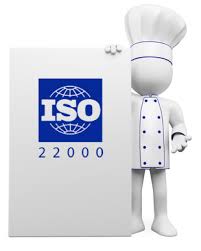
e) responsibilities and authorities;
f) record(s) of monitoring.
17. Establishing the HACCP plan
Clause 7.6
1. HACCP plan
The HACCP plan shall be documented and shall include the following information for each identified critical control point (CCP):
The HACCP plan shall be documented and shall include the following information for each identified critical control point (CCP):
a) food safety hazard(s) to be controlled at the CCP (see 7.4.4);
b) control measure(s) (see 7.4.4)
c) critical limit(s) (see 7.6.3);
d) monitoring procedure(s) (see 7.6.4);
e) corrections and corrective action(s) to be taken if critical limits are exceeded (see 7.6.5);
f) responsibilities and authorities;
g) record(s) of monitoring.
2. Identification of critical control points (CCPs)
For each hazard that is to be controlled by the HACCP plan, CCP(s) shall be identified for the control measures identified (see 7.4.4).
3. Determination of critical limits for critical control points
Critical limits shall be determined for the monitoring established for each CCP.
Critical limits shall be established to ensure that the identified acceptable level of the food safety hazard in the end product (see 7.4.2) is not exceeded.
Critical limits shall be measurable. The rationale for the chosen critical limits shall be documented. Critical limits based on subjective data (such as visual inspection of product, process, handling, etc.) shall be supported by instructions or specifications and/or education and training.
4. System for the monitoring of critical control points
A monitoring system shall be established for each CCP to demonstrate that the CCP is in control. The system shall include all scheduled measurements or observations relative to the critical limit(s). The monitoring system shall consist of relevant procedures, instructions and records that cover the following:
a) measurements or observations that provide results within an adequate time frame;
b) monitoring devices used;
c) applicable calibration methods (see 8.3);
d) monitoring frequency;
e) responsibility and authority related to monitoring and evaluation of monitoring results;
f) record requirements and methods.
The monitoring methods and frequency shall be capable of determining when the critical limits have been exceeded in time for the product to be isolated before it is used or consumed.
5. Actions when monitoring results exceed critical limits
Planned corrections and corrective actions to be taken when critical limits are exceeded shall be specified in the HACCP plan. The actions shall ensure that the cause of nonconformity is identified, that the parameter(s) controlled at the CCP is (are) brought back under control, and that recurrence is prevented (see 7.10.2).
Documented procedures shall be established and maintained for the appropriate handling of potentially unsafe products to ensure that they are not released until they have been evaluated (see 7.10.3).
18. Updating of preliminary information and documents specifying the PRPs and the HACCP plan
Updating of preliminary information and documents specifying the PRPs and the HACCP plan
Clause 7.7
Following the establishment of operational PRP(s) (see 7.5) and/or the HACCP plan (see 7.6), the organization shall update the following information, if necessary:
a) product characteristics (see 7.3.3);
b) intended use (see 7.3.4);
c) flow diagrams (see 7.3.5.1);
d) process steps (see 7.3.5.2);
e) control measures (see 7.3.5.2).
If necessary, the HACCP plan (see 7.6.1) and the procedures and instructions specifying the PRP(s) (see 7.2) shall be amended.
19. Verification planning
Clause 7.8
Verification planning shall define the purpose, methods, frequencies and responsibilities for the verification activities. The verification activities shall confirm that
a) the PRP(s) are implemented (see 7.2),
b) input to the hazard analysis (see 7.3) is continually updated,
c) the operational PRP(s) (see 7.5) and the elements within the HACCP plan (see 7.6.1) are implemented and effective,
d) hazard levels are within identified acceptable levels (see 7.4.2), and
e) other procedures required by the organization are implemented and effective.
The output of this planning shall be in a form suitable for the organization’s method of operations.
Verification results shall be recorded and shall be communicated to the food safety team. Verification results shall be provided to enable the analysis of the results of the verification activities (see 8.4.3).
If system verification is based on testing of end product samples, and where such test samples show nonconformity with the acceptable level of the food safety hazard (see 7.4.2), the affected lots of product shall be handled as potentially unsafe in accordance with 7.10.3.
20. Control of nonconformity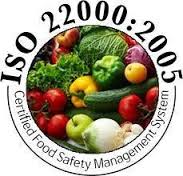
Control of nonconformity in ISO 22000
Clause 7.10
1. Corrections
The organization shall ensure that when critical limits for CCP(s) are exceeded (see 7.6.5), or there is a loss of control of operational PRP(s), the products affected are identified and controlled with regard to their use and release.
A documented procedure shall be established and maintained defining
a) the identification and assessment of affected end products to determine their proper handling (see 7.10.3), and
b) a review of the corrections carried out.
Products manufactured under conditions where critical limits have been exceeded are potentially unsafe products and shall be handled in accordance with 7.10.3. Products manufactured under conditions where operational PRP(s) have not been conformed with shall be evaluated with respect to the cause(s) of the nonconformity and to the consequences thereof in terms of food safety and shall, where necessary, be handled in accordance with 7.10.3. The evaluation shall be recorded.
All corrections shall be approved by the responsible person(s), and shall be recorded together with information on the nature of the nonconformity, its cause(s) and consequence(s), including information needed for trace ability purposes related to the nonconforming lots.
2. Corrective actions
Data derived from the monitoring of operational PRPs and CCPs shall be evaluated by designated person(s) with sufficient knowledge (see 6.2) and authority (see 5.4) to initiate corrective actions. Corrective actions shall be initiated when critical limits are exceeded (see 7.6.5) or when there is a lack of conformity with operational PRP(s).
The organization shall establish and maintain documented procedures that specify appropriate actions to identify and eliminate the cause of detected non conformities, to prevent recurrence, and to bring the process or system back into control after nonconformity is encountered. These actions include
a) reviewing non conformities (including customer complaints),
b) reviewing trends in monitoring results that may indicate development towards loss of control,
c) determining the cause(s) of non conformities,
d) evaluating the need for action to ensure that non conformities do not recur,
e) determining and implementing the actions needed,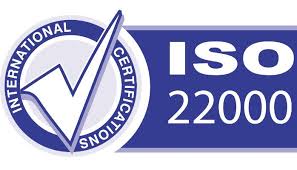
f) recording the results of corrective actions taken, and
g) reviewing corrective actions taken to ensure that they are effective.
Corrective actions shall be recorded.
3. Handling of potentially unsafe products
3.1 General
The organization shall handle nonconforming product by taking action(s) to prevent the nonconforming product from entering the food chain unless it is possible to ensure that
a) the food safety hazard(s) of concern has(ve) been reduced to the defined acceptable levels,
b) the food safety hazard(s) of concern will be reduced to identified acceptable levels (see 7.4.2) prior to entering into the food chain, or
c) the product still meets the defined acceptable level(s) of the food safety hazard(s) of concern despite the nonconformity.
All lots of product that may have been affected by a nonconforming situation shall be held under control of the organization until they have been evaluated. If products that have left the control of the organization are subsequently determined to be unsafe, the organization shall notify relevant interested parties and initiate a withdrawal (see 7.10.4).
NOTE The term “withdrawal” includes recall.
The controls and related responses and authorization for dealing with potentially unsafe products shall be documented.
3.2 Evaluation for release
Each lot of product affected by the nonconformity shall only be released as safe when any of the following conditions apply:
a) evidence other than the monitoring system demonstrates that the control measures have been effective;
b) evidence shows that the combined effect of the control measures for that particular product complies with the performance intended (i.e. identified acceptable levels as identified in accordance with 7.4.2);
c) the results of sampling, analysis and/or other verification activities demonstrate that the affected lot of product complies with the identified acceptable levels for the food safety hazard(s) concerned.
3.3 Disposition of nonconforming products
Following evaluation, if the lot of product is not acceptable for release it shall be handled by one of the following activities:
a) reprocessing or further processing within or outside the organization to ensure that the food safety hazard is eliminated or reduced to acceptable levels;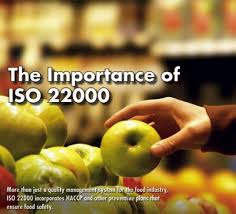
b) destruction and/or disposal as waste.
4. Withdrawals
To enable and facilitate the complete and timely withdrawal of lots of end products which have been identified as unsafe
a) top management shall appoint personnel having the authority to initiate a withdrawal and personnel responsible for executing the withdrawal, and
b) the organization shall establish and maintain a documented procedure for
1) notification to relevant interested parties (e.g. statutory and regulatory authorities, customers and/or consumers),
2) handling of withdrawn products as well as affected lots of the products still in stock, and
3) the sequence of actions to be taken.
Withdrawn products shall be secured or held under supervision until they are destroyed, used for purposes other than originally intended, determined to be safe for the same (or other) intended use, or reprocessed in a manner to ensure they become safe.
The cause, extent and result of a withdrawal shall be recorded and reported to top management as input to the management review (see 5.8.2).The organization shall verify & record the effectiveness of the withdrawal program through the use of appropriate techniques (e.g. mock withdrawal or practice withdrawal).
21. Validation of control measure combinations
Clause 8.2
Prior to implementation of control measures to be included in operational PRP(s) and the HACCP plan and after any change therein (see 8.5.2), the organization shall validate (see 3.15) that
a) the selected control measures are capable of achieving the intended control of the food safety hazard(s) for which they are designated, and
b) the control measures are effective and capable of, in combination, ensuring control of the identified food safety hazard(s) to obtain end products that meet the defined acceptable levels.
If the result of the validation shows that one or both of the above elements cannot be confirmed, the control measure and/or combinations thereof shall be modified and re-assessed (see 7.4.4).
Modifications may include changes in control measures (i.e. process parameters, rigorousness and/or their combination) and/or change(s) in the raw materials, manufacturing technologies, end product characteristics, methods of distribution and/or intended use of the end product.
22. Control of monitoring and measuring
Clause 8.3
The organization shall provide evidence that the specified monitoring and measuring methods and equipment are adequate to ensure the performance of the monitoring and measuring procedures.
Where necessary to ensure valid results, the measuring equipment and methods used
a) shall be calibrated or verified at specified intervals, or prior to use, against measurement standards traceable to international or national measurement standards; where no such standards exist, the basis used for calibration or verification shall be recorded,
b) shall be adjusted or re-adjusted as necessary,
c) shall be identified to enable the calibration status to be determined,
d) shall be safeguarded from adjustments that would invalidate the measurement results, and
e) shall be protected from damage and deterioration.
Records of the results of calibration and verification shall be maintained.
In addition, the organization shall assess the validity of the previous measurement results when the equipment or process is found not to conform to requirements. If the measuring equipment is nonconforming, the organization shall take action appropriate for the equipment and any product affected. Records of such assessment and resulting actions shall be maintained.
When used in the monitoring and measurement of specified requirements, the ability of computer software to satisfy the intended application shall be confirmed. This shall be undertaken prior to initial use and shall be reconfirmed as necessary.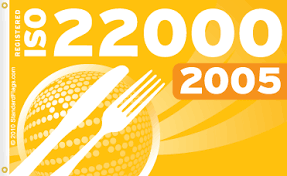
23.Food safety management system verification
8.4 Food safety management system verification in ISO 22000
Clause 8.4
1. Internal audit
The organization shall conduct internal audits at planned intervals to determine whether the food safety management system
a) conforms to the planned arrangements, to the food safety management system requirements established by the organization, and to the requirements of this International Standard, and
b) is effectively implemented and updated.
An audit program shall be planned, taking into consideration the importance of the processes and areas to be audited, as well as any updating actions resulting from previous audits (see 8.5.2 and 5.8.2).criteria, scope, frequency and methods shall be defined. Selection of auditors and the conduct of audits shall ensure the objectivity and impartiality of the audit process. Auditors shall not audit their own work.
The responsibilities and requirements for planning and conducting audits, and for reporting results and maintaining records, shall be defined in a documented procedure.
The management responsible for the area being audited shall ensure that actions are taken without undue delay to eliminate detected nonconformities and their causes. Follow-up activities shall include the verification of the actions taken and the reporting of the verification results.
2 Evaluation of individual verification results
The food safety team shall systematically evaluate the individual results of planned verification (see 7.8).
If verification does not demonstrate conformity with the planned arrangements, the organization shall take action to achieve the required conformity.Such action shall include,but is not limited to,review of
a) existing procedures and communication channels (see 5.6 and 7.7),
b) the conclusions of the hazard analysis (see 7.4), the established operational PRP(s) (see 7.5) and the
HACCP plan (see 7.6.1),
c) the PRP(s) (see 7.2), and
d) the effectiveness of human resource management and of training activities (see 6.2).
3 Analysis of results of verification activities
The food safety team shall analyse the results of verification activities, including the results of the internal audits (see 8.4.1) and external audits. The analysis shall be carried out in order
a) to confirm that the overall performance of the system meets the planned arrangements and the food safety management system requirements established by the organization,
b) to identify the need for updating or improving the food safety management system,
c) to identify trends which indicate a higher incidence of potentially unsafe products,
d) to establish information for planning of the internal audit programmer concerning the status and importance of areas to be audited, and
e) to provide evidence that any corrections and corrective actions that have been taken are effective.
The results of the analysis and the resulting activities shall be recorded and shall be reported, in an appropriate manner, to top management as input to the management review (see 5.8.2). It shall also be used as an input for updating the food safety management system (see 8.5.2).
24. Improvement of ISO 22000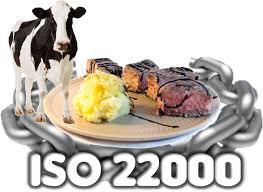
Clause 8.5
1 Continual improvement
Top management shall ensure that the organization continually improves the effectiveness of the food safety management system through the use of communication (see 5.6), management review (see 5.8), internal audit (see 8.4.1), evaluation of individual verification results (see 8.4.2), analysis of results of verification activities (see 8.4.3), validation of control measure combinations (see 8.2), corrective actions (see 7.10.2) and food safety management system updating (see 8.5.2).
NOTE ISO 9001 addresses continual improvement of the effectiveness of quality management systems. ISO 9004 provides guidance on continual improvement of the effectiveness and efficiency of quality management systems beyond what is addressed in ISO 9001.
2 Updating the food safety management system
Top management shall ensure that the food safety management system is continually updated.
In order to achieve this, the food safety team shall evaluate the food safety management system at planned intervals. The team shall then consider whether it is necessary to review the hazard analysis (see 7.4), the established operational PRP(s) (see 7.5) and the HACCP plan (see 7.6.1).
The evaluation and updating activities shall be based on
a) input from communication, external as well as internal, as stated in 5.6,
b) input from other information concerning the suitability, adequacy and effectiveness of the food safety management system,
c) output from the analysis of results of verification activities (see 8.4.3), and
d) output from management review (see 5.8.3).
System updating activities shall be recorded and reported, in an appropriate manner, as input to the
management review (see 5.8.2).
Click the below link to download the audit check sheet
